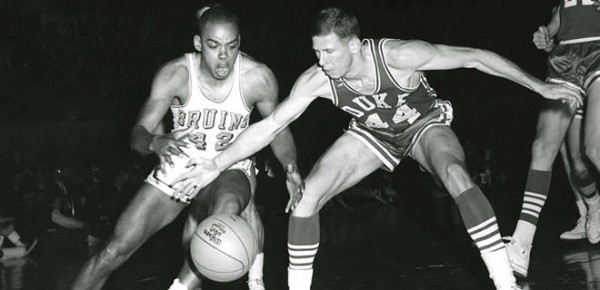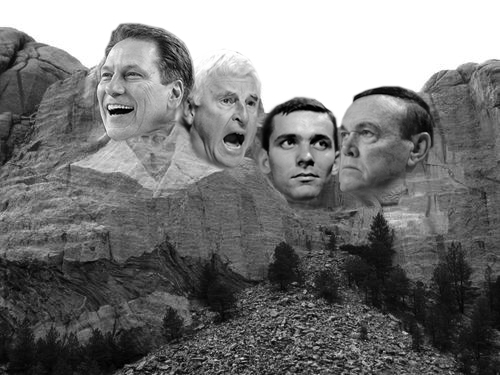Municipal Auditorium: College Basketball Still Lives In Its KC Cathedral
Posted by Greg Mitchell (@gregpmitchell) on January 19th, 2014There’s a revival underway at one of the cathedrals of college basketball. Once upon a time, John Wooden paced the sidelines in this building and Wilt Chamberlain took the floor here. But this isn’t Pauley Pavilion or Allen Fieldhouse; rather, Municipal Auditorium in Kansas City. Municipal doesn’t have the instant credibility of The Palestra or Hinkle Fieldhouse, but it’s nearly as old as those fabled venues, and steeped in just as much history.

Walt Hazzard leads UCLA past Duke in the 1964 final at Municipal Auditorium. This was the first of many titles for John Wooden and UCLA (msn.foxsports.com).
Municipal has hosted more Final Fours than any other building in the country (nine) and the second-most total tournament games (only Dayton Arena, buoyed by the First Four, has hosted more). Wooden won his fist national championship on Municipal’s floor by beating Duke in 1964, his 16th season on the bench in Westwood. The win was also the finishing touch on Wooden’s first of four undefeated seasons at UCLA (30-0). Three years before that, Cincinnati walked off Municipal’s floor as national champions, surviving a 27-point effort from Ohio State’s Jerry Lucas in the final. The Buckeyes got two points from a reserve forward named Bob Knight in the 1961 championship game; as it turned out, that one field goal wouldn’t be the pinnacle of his basketball career. Kansas reached the 1957 finals at Municipal on the back of Chamberlain (that tournament’s Most Outstanding Player), but fell in triple overtime to Frank McGuire-coached North Carolina. This was the Tar Heels’ first championship and second Final Four appearance, and things have gone pretty well in Chapel Hill ever since.












































